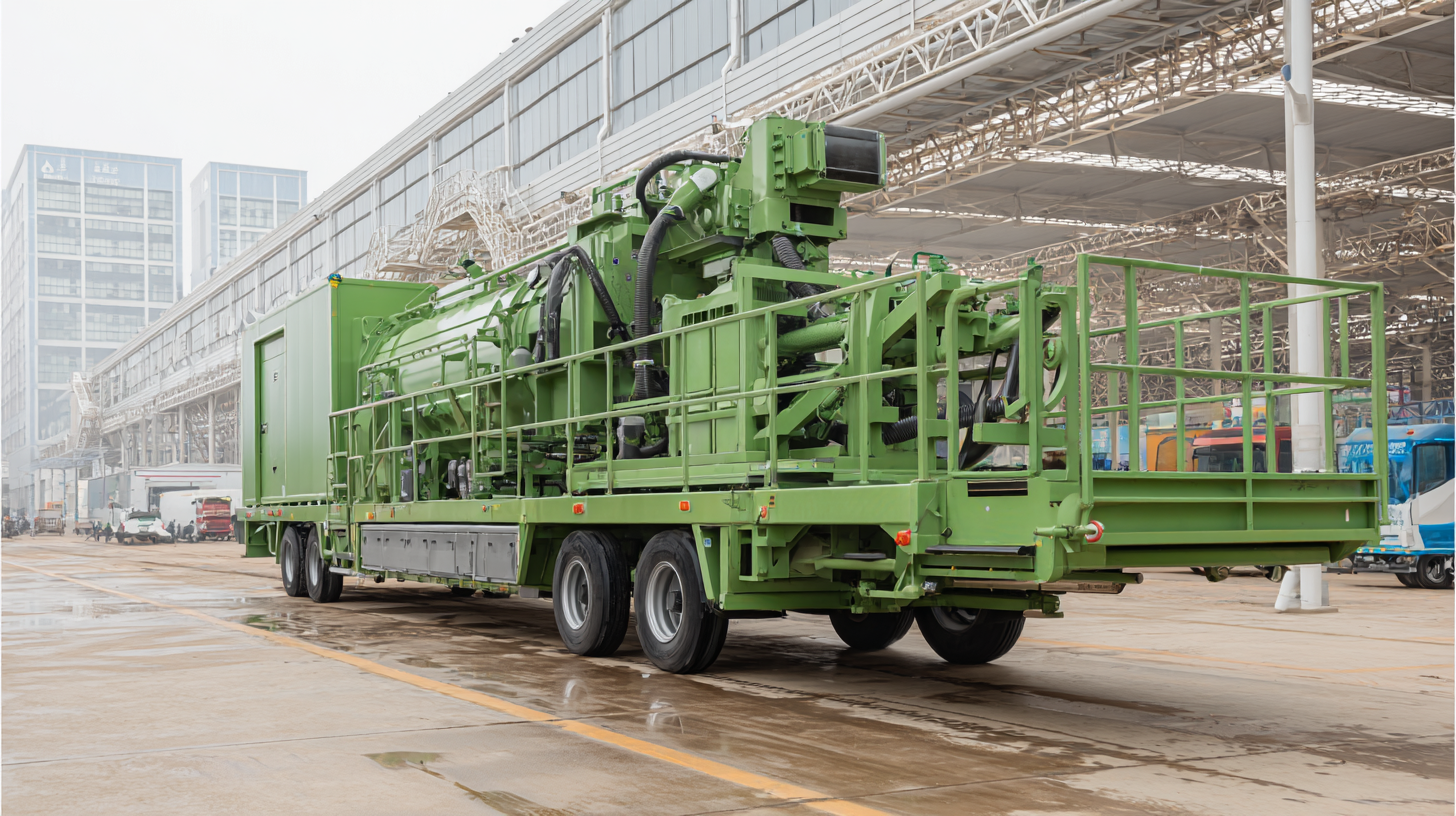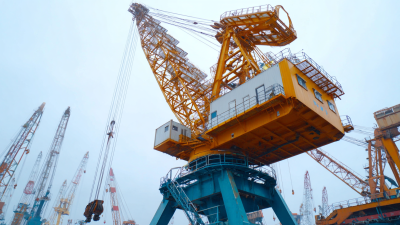Leave Your Message
-
Phone
-
E-mail
-
WhatsApp
As the world grapples with increasing air pollution and environmental challenges, innovative solutions for
dust suppression are becoming paramount, particularly in large-scale events such as the
2025 China Import and Export Fair. According to a recent report by
the International Journal of Environmental Research, dust emissions in industrial and construction sectors
contribute to over 40% of air quality degradation, underscoring the urgent
need for effective mitigation strategies.
 Among the advanced technologies emerging in this field, the "Dust-Suppression Water Cannon"
stands out for its ability to significantly reduce airborne particulates through high-pressure water sprays that
capture dust particles. Such technological advancements not only enhance air quality but also improve safety for
attendees and workers alike, making them critical to the success of massive trade exhibitions like the upcoming fair.
Among the advanced technologies emerging in this field, the "Dust-Suppression Water Cannon"
stands out for its ability to significantly reduce airborne particulates through high-pressure water sprays that
capture dust particles. Such technological advancements not only enhance air quality but also improve safety for
attendees and workers alike, making them critical to the success of massive trade exhibitions like the upcoming fair.
At the upcoming 2025 China Import and Export Fair, a noteworthy focus will be on the emerging innovations in dust suppression methods for industrial applications. Industries are increasingly recognizing the need for effective dust control solutions to enhance operational efficiency and ensure compliance with environmental regulations. Among the forefront of these innovations are biodegradable dust suppressants and advanced misting systems that utilize nanotechnology to capture particulate matter more effectively.
One notable trend is the integration of smart technology into dust suppression strategies. By employing IoT devices, industries can monitor dust levels in real-time and adjust suppression techniques accordingly. This data-driven approach not only optimizes resource use but also minimizes environmental impact. Additionally, eco-friendly materials are being developed, allowing for sustainable practices without compromising effectiveness. As these technologies gain traction, they promise to revolutionize dust management in sectors such as mining, construction, and manufacturing, paving the way for safer and cleaner workplaces.

The use of eco-friendly materials in dust suppression technologies has gained significant attention in recent years, particularly as industries seek sustainable alternatives to traditional methods. At the 2025 China Import and Export Fair, cutting-edge innovations demonstrated how natural and biodegradable substances can effectively mitigate dust emissions. These materials, which include plant-based polymers and organic compounds, not only reduce environmental impact but also enhance the longevity of dust control measures.
Research has shown that eco-friendly dust suppressants can outperform conventional synthetic agents in various conditions. For instance, products derived from natural sources often provide superior adhesion properties, creating a longer-lasting barrier against particulate matter. Furthermore, adopting these green alternatives aligns with global environmental goals, contributing to cleaner air and healthier ecosystems. As the demand for sustainable practices grows, the integration of eco-friendly materials in dust control applications represents a promising trend that could redefine industry standards and practices in the years to come.
As environmental concerns continue to rise, the integration of smart technologies in dust suppression solutions is becoming increasingly pivotal, especially highlighted during the 2025 China Import and Export Fair. These advancements not only improve air quality but also enhance operational efficiency. Smart sensors and data analytics are being employed to monitor air quality in real-time, enabling more targeted and effective dust control measures. By using artificial intelligence, companies can forecast dust levels and automate suppression methods, resulting in a more sustainable approach to dust management.
Tips for implementing smart dust suppression technologies include conducting a comprehensive assessment of the site to determine the most effective technologies for your specific needs. Additionally, considering the scalability of these solutions can help ensure long-term effectiveness and adaptability. Regular maintenance and updates of both software and hardware components are essential to maximize operational efficiency and minimize downtime. Embracing these technologies not only contributes to a cleaner environment but also enhances corporate responsibility toward sustainability in industrial practices.
| Technology Type | Application Area | Smart Feature | Environmental Impact | Cost Efficiency |
|---|---|---|---|---|
| Water-based Suppression | Construction Sites | Remote Monitoring | Minimized Soil Erosion | Moderate |
| Polymers and Emulsions | Mining Operations | Automated Dispensing | High Efficiency | High |
| Bio-based Agents | Agricultural Fields | Data Analytics | Eco-friendly | Low |
| Dust Suppression Agents | Road Maintenance | Mobile Applications | Reduced Airborne Particles | Moderate |
| Laser Dust Control Systems | Industrial Facilities | Real-time Monitoring | Very Low Impact | High |
At the 2025 China Import and Export Fair, innovative dust suppression technologies are anticipated to take center stage, focusing on successful case studies that highlight effective dust control implementations at previous trade fairs. One notable instance is the recent China-South Africa Industry Cooperation Promotion Conference held in Johannesburg, where attendees discussed sustainable practices, including air quality management methods. This event showcased how targeted dust suppression strategies can significantly contribute to cleaner environments during large-scale trade exhibitions, facilitating better engagement and interactions among participants.

In addition, the upcoming global digital trade exposition in Zhejiang emphasizes the integration of technology with environmental solutions, presenting opportunities for businesses to adopt advanced dust control measures. Exhibitors are encouraged to showcase their efforts in reducing dust during events, incorporating innovative solutions that align with international standards. Such initiatives not only enhance participant experience but also foster a collaborative approach to addressing environmental challenges within the ambit of international trade fairs, demonstrating a commitment to sustainability in business operations.
As dust suppression technologies continue to evolve, the focus on research and development is paramount for addressing the challenges posed by dust pollution, especially at large-scale events like the China Import and Export Fair. Future directions for R&D in dust management technologies are likely to emphasize the integration of smart systems that utilize real-time data analytics. These systems can adaptively modify suppression techniques based on changing environmental conditions, significantly improving effectiveness and efficiency.
Another promising area of research involves the development of sustainable and eco-friendly dust suppression materials. Innovations such as biodegradable binders and improved polymers that minimize environmental impact while maximizing dust control effectiveness are gaining attention. Furthermore, collaborative efforts between industry, academia, and government can foster advancements in nanotechnology and chemical treatments, which could revolutionize the way dust emissions are managed across various sectors, not just in trade fairs but also in construction and mining operations.






